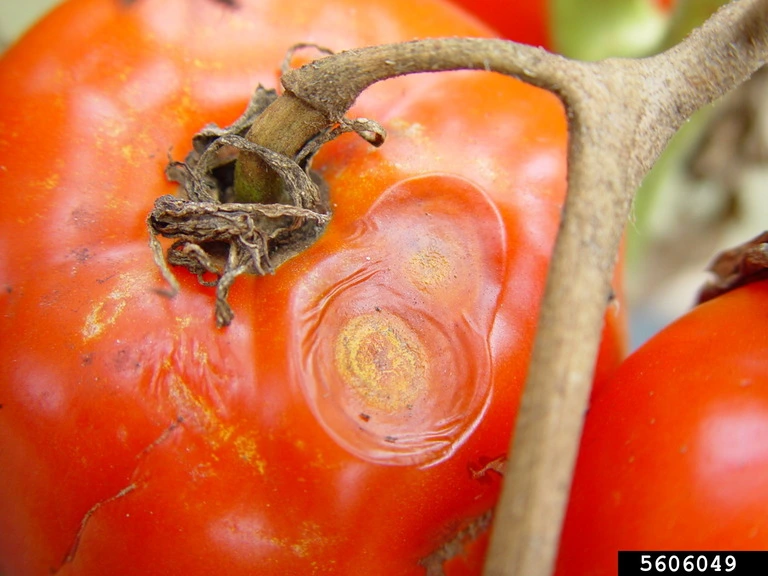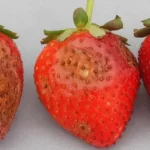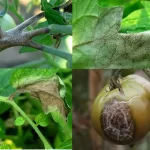Colletotrichum gloeosporioides
Introduction
Colletotrichum gloeosporioides is a widespread and destructive fungal pathogen responsible for anthracnose disease in various fruit, vegetable, and ornamental plants. It has a wide range of hosts and is considered to be one of the top ten most economically important fungal pathogens (1). It poses a significant threat to both indoor and outdoor growers due to its ability to infect all parts of a plant. It can even cause post-harvest damage to fruits, drastically decreasing the value of the season’s production. Colletotrichum gloeosporioides is estimated to cause millions of dollars in crop losses annually, as it affects multiple plant groups, from mangoes to basil to tomatoes (2). Strawberry growers should be aware that Colletotrichum gloeosporioides infect strawberries, like Colletotrichum actuatum (3).
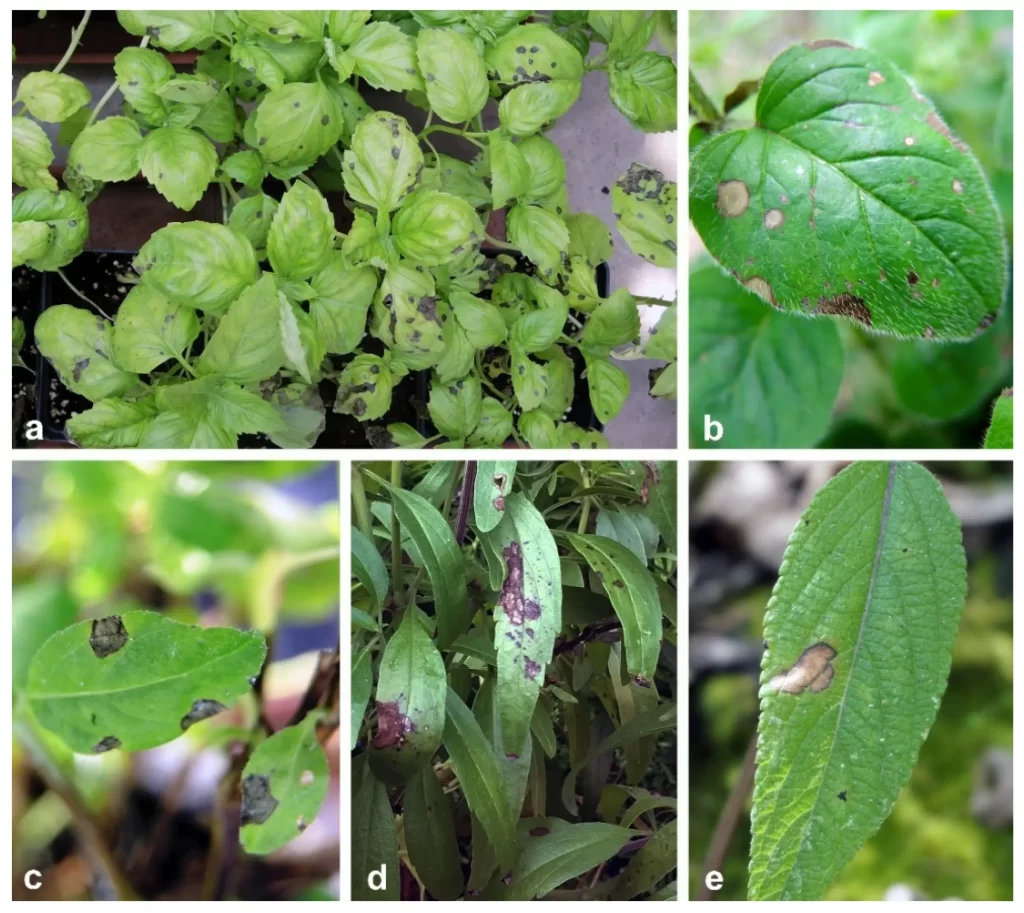
Table 1: Common hosts and their susceptibility to Colletotrichum gloeosporioides
|
Host |
Susceptibility |
|
Avocado |
High |
|
Mango |
High |
|
Papaya |
High |
|
Strawberry |
High |
|
Banana |
Moderate |
|
Citrus |
Moderate |
|
Tomato |
Moderate |
|
Cucumber |
Low |
|
Pepper |
Low |
We provide great overviews of many agricultural microorganisms. Subscribe to stay updated!
Symptoms
The initial symptoms of Colletotrichum gloeosporioides infection include small, water-soaked lesions on leaves, stems, and fruits. As the disease progresses, these lesions expand and may develop into sunken, necrotic areas with a distinct dark brown or black coloration. In some cases, acervuli (fungal fruiting bodies) may form within the lesions, releasing masses of salmon-coloured spores (conidia) that contribute to the spread of the pathogen (4-6).
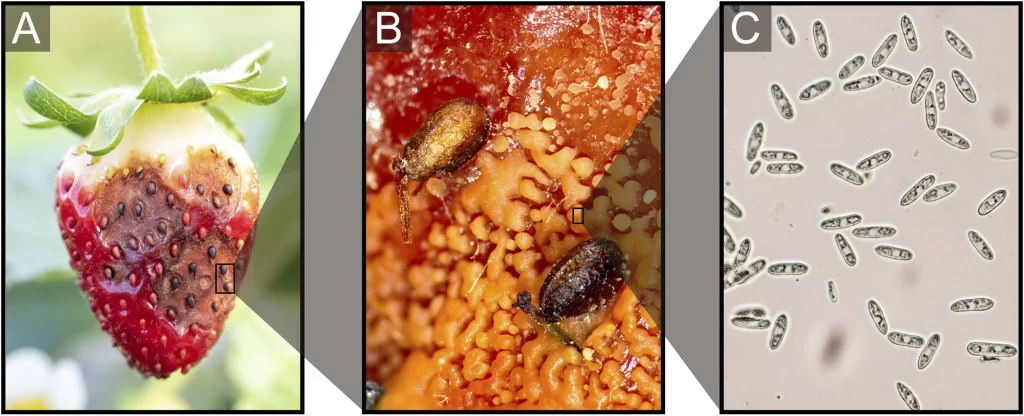
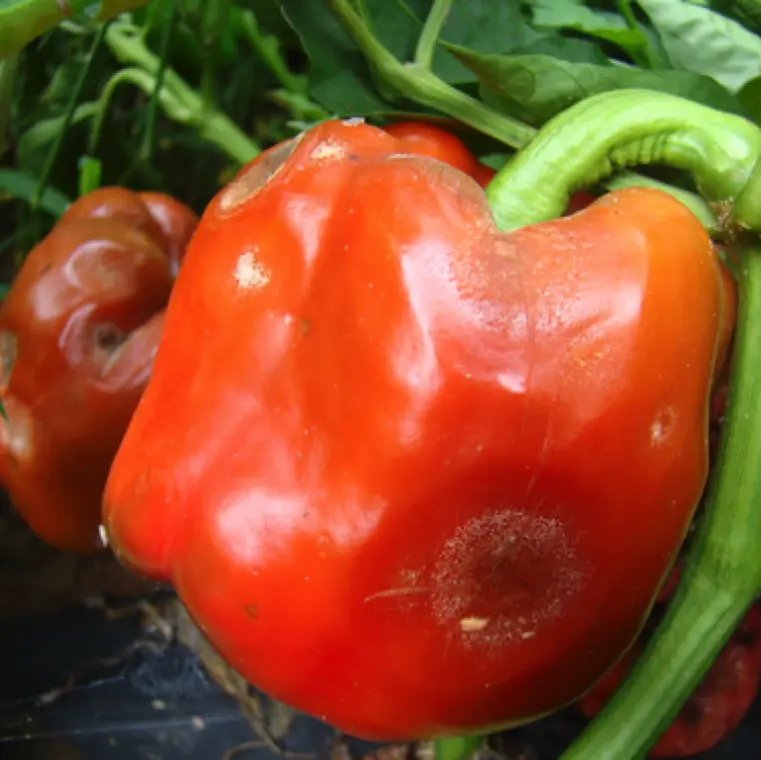
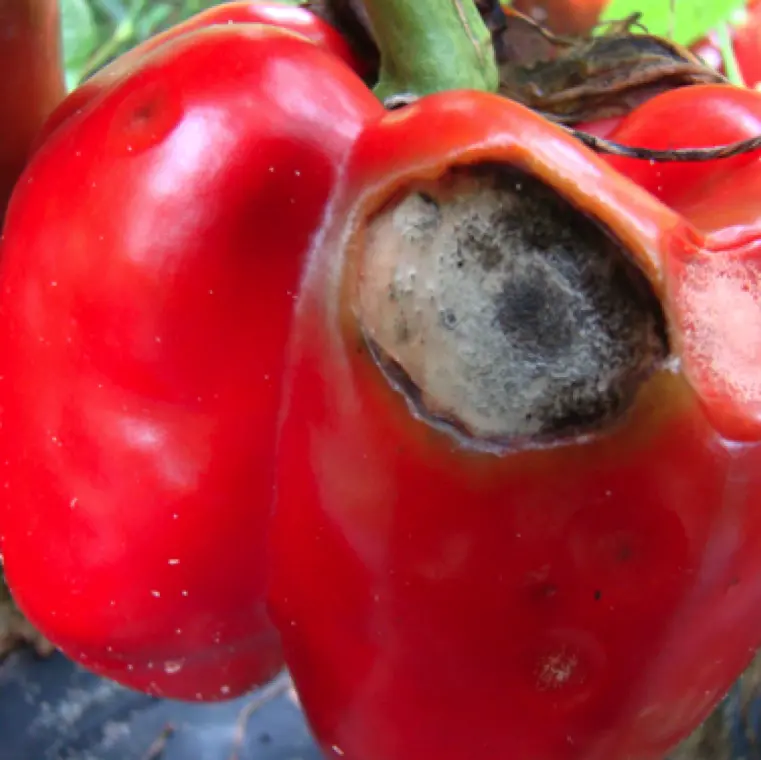
Life Cycle and Infection Stages
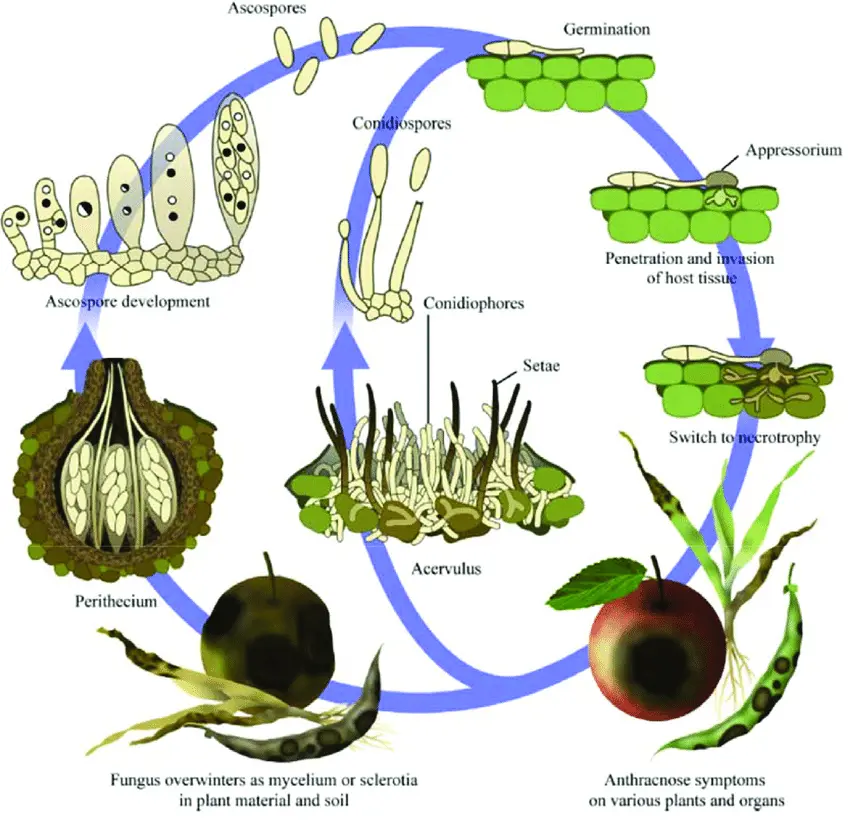
The life cycle of Colletotrichum gloeosporioides consists of several stages, including conidia production, germination, appressorium formation, penetration, and colonization of host tissues. Conidia are the primary means of dispersal for the pathogen and are often spread by wind, water, or contaminated equipment. Upon landing on a suitable host, the conidia germinate and form appressoria, specialized structures that facilitate penetration into plant tissues. Once inside the host, the pathogen colonizes and destroys plant cells, resulting in the characteristic symptoms of anthracnose disease (5, 7).
Growth Conditions
Colletotrichum gloeosporioides thrives in warm, humid conditions, with optimal temperatures for growth ranging between 75 and 85°F (24-29°C) (2,7). Extended periods of high humidity or leaf wetness can promote infection and disease development, making proper ventilation crucial for greenhouse growers.
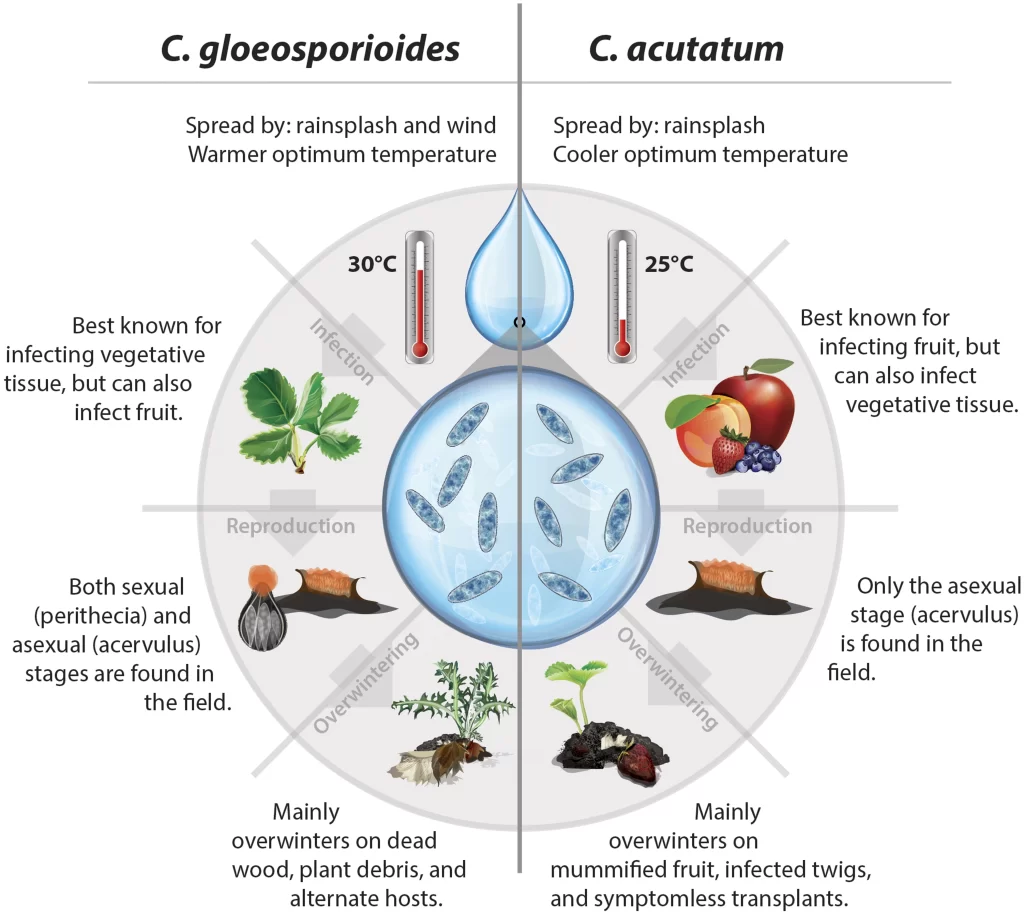
Methods of Prevention and Control
Greenhouse growers can employ several strategies to prevent and control Colletotrichum gloeosporioides infections (5, 7):
- Sanitation: Regularly clean and sanitize greenhouse surfaces and equipment to reduce potential sources of inoculum.
- Cultural practices: Maintain proper plant spacing, pruning, and trellising to promote good air circulation and reduce leaf wetness.
- Monitoring and early detection: Routinely inspect plants for symptoms and implement control measures promptly if infection is detected.
Conclusion
Colletotrichum gloeosporioides is a significant pathogen affecting a wide range of crops in greenhouse settings. By understanding its symptoms, life cycle, and growth conditions–and employing effective prevention and control strategies–greenhouse growers can minimize the economic impact of this destructive pathogen on their operations. Constant vigilance and adaptation of the latest research findings and control methods are crucial in the fight against Colletotrichum gloeosporioides.
Disclaimer
The information we present in Pathogen Profile is based on collating published peer-reviewed scientific literature and sources we think are reliable. This is by no means an exhaustive review of pathogens. Pathogen Profile gives a small glimpse of what is known about pathogens. We encourage growers to do more research on the pathogens concerning their crops and hydroponic systems. We are not plant pathologists; thus, the information presented in the Pathogen Profile should not be used as professional advice to treat pathogens or operate your system.
References
- Dean, R., Van Kan, J. A., Pretorius, Z. A., Hammond-Kosack, K. E., Di Pietro, A., Spanu, P. D., Rudd, J. J., Dickman, M., Kahmann, R., Ellis, J., & Foster, G. D. (2012). The Top 10 fungal pathogens in molecular plant pathology. Molecular plant pathology, 13(4), 414–430. https://doi.org/10.1111/j.1364-3703.2011.00783.x
- Siddiqui, Y., & Ali, A. (2014). Colletotrichum gloeosporioides (Anthracnose). Postharvest Decay: Control Strategies, 337-371. Academic Press. https://doi.org/10.1016/B978-0-12-411552-1.00011-9
- Smith, B. J. (2008). Epidemiology and Pathology of Strawberry Anthracnose: A North American Perspective, HortScience horts, 43(1), 69-73. Retrieved May 4, 2023, from https://doi.org/10.21273/HORTSCI.43.1.69
- Prusky, D., Alkan, N., Mengiste, T., & Fluhr, R. (2013). Quiescent and necrotrophic lifestyle choice during postharvest disease development. Annual Review of Phytopathology, 51, 155-176.
- Roberts, P. D., Pernezny, K. L., & Kucharek, T. A. (2018). Anthracnose on pepper in Florida. IFAS Extension. Retrieved from https://edis.ifas.ufl.edu/publication/PP104Dowling, M., Peres, N., Villani, S., & Schnabel, G. (2020). Managing Colletotrichum on fruit crops: A “complex” challenge. Plant Disease, 104(9), 2301-2316. https://doi.org/10.1094/PDIS-01-20-0126-FE
- Coates, L., Cooke, T., & Forsberg, L. (n.d.). The biology and management of Colletotrichum diseases in production nurseries. Department of Agriculture, Fisheries and Forestry, Brisbane, Australia.
- Dowling, M., Peres, N., Villani, S., & Schnabel, G. (2020). Managing Colletotrichum on Fruit Crops: A “Complex” Challenge. Plant Disease, 104(9), 2301-2316. https://doi.org/10.1094/PDIS-11-19-2378-FE
![]()
David Santos is an Agritech Advisor at Healthy Hydroponics InnoTech


